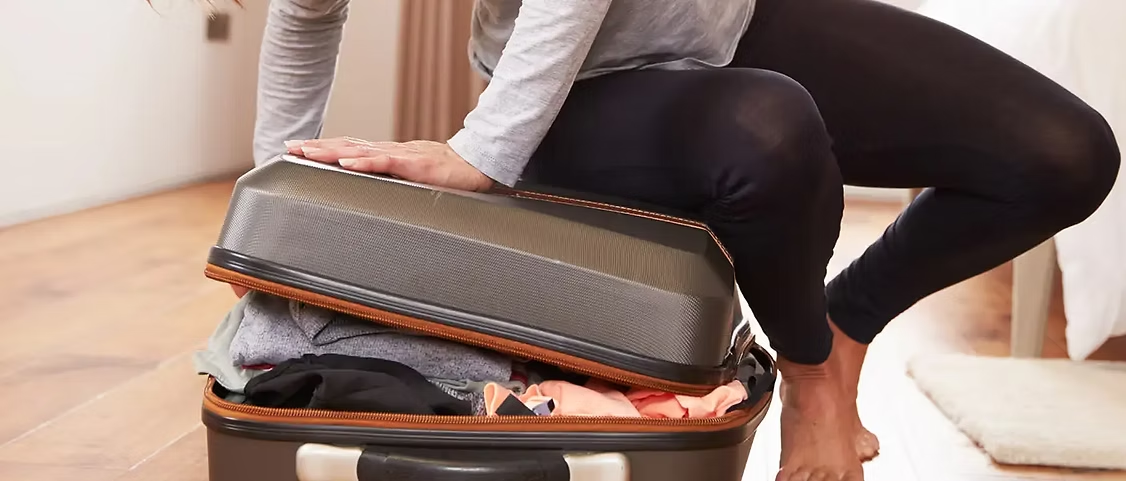FIRST: REMEMBER YOUR TRAVEL DOCUMENTS
Flight Tickets / Cruise Documents / Passport / Visa
Pack these items in your carry-on or handbag, not your suitcase!

Taking your first cruise can be an exciting yet daunting experience. With so many options and details to consider, proper planning can make all the difference. Here are some essential tips to help you make the most of your maiden voyage.
For starters, you only have to unpack once, even as you travel from place to place. You also don’t have to go hunting for a restaurant every night. Dining spots are usually just steps away from your stateroom, with tables waiting for you. You’ll also have no trouble finding entertainment.
But even in its simplicity, cruising still can be daunting for a first-timer. What should you bring? What should you plan on doing in ports? What is the best way to book?
If you’ve read this far, you are likely a first-time cruiser looking for advice for an upcoming trip, and that’s exactly what this story is meant to offer. It contains ket takaways to make your first sailing go flawlessly. We’re the experts at site2sea.
Arrive at your departure port a day ahead of schedule
If you only follow one piece of advice in this story, it should be this one. It is the only way to ensure you won’t miss your ship — something that happens to cruisers more often than you would think. Many cruises depart in the afternoon, so it might seem just fine to fly or drive to a port on the morning of departure. But all it takes is a moderate flight delay or a pileup on the highway to upset those plans. If you’re delayed in your arrival at the port, the ship will not wait for you.
If you’re traveling overseas for a cruise, we recommend traveling to the port at least one if not two days in advance. This isn’t just so you don’t miss the ship. It’s also so you have some time to recover from jet lag. European cruises, in particular, can be port-intensive, with lots of touring, so you want to be refreshed and ready to hit the ground running right after the cruise begins.
Buy Travel Insurance
Getting travel insurance for your cruise trip comes with several benefits. Be it missing the ship’s boarding or falling ill during the trip, your travel insurance will provide you compensation for all such unfortunate events. It will also cover the booking charges if you have to cancel your cruise trip at the last minute.

Pack your bathing suit in your carry-on on warm weather voyages
When you first arrive at a ship, before you even get on board, you’ll likely be greeted by porters who will whisk away your luggage. It will be delivered to your room later in the day. This is a great convenience, as there’s no need to haul your bags through the entire check-in progress. But it also means you might not have access to your luggage for many hours on your first day on board. Be sure to pack anything you think you might need for these first hours of your cruise in your carry-on bag. This includes medication, for sure, but also a phone charger, a bathing suit, a hat, sunscreen and other items that will allow you to head straight to the outdoor decks (hint: pool) to start the fun.
Don’t overpack
Use this strategy when packing for a cruise: Throw all the clothes you think you’ll need during the trip in a pile, and then take away half of them. You won’t need them. Trust us.
Most cruising these days is casual, and you really only need a few outfits to rotate through a voyage. If things get dirty, it’s no problem. Some ships have self-serve launderettes on cabin decks where you can run a load or two of laundry every few days. If not, you can send laundry out to be cleaned on board. It’ll usually come back in a day, or less.
The extra cost of doing a few loads of laundry on a ship is a small price to pay for the freedom of not having to lug a giant suitcase around as you travel to and from your ship. Plus, you’ll want to save room in your suitcase for all the little treasures you’re going to find along the way.
Pack for for comfort
Daily life aboard ship and in ports of call is laid-back and casual. You are encouraged to wear whatever makes you feel most comfortable: sportswear, shorts, slacks, sundresses and so on. Warmer temperatures call for clothing made of lightweight, breathable fabrics. For cooler temperatures we suggest casual clothes that can be layered easily. On some days you may need a raincoat and waterproof hat or umbrella. Footwear should include comfortable walking shoes for visits ashore and sandals or rubber-soled shoes for strolling on deck.
In the evening the dress codes varies according to the ship that you are sailing on. Many cruiselines offer a variety of restaurants to choose from where the dress codes for those restaurants will vary from casual to smart casual to formal. The suggested dress code in the ships’ main dining rooms is generally sport shirts and slacks for men and sundresses or pants for women although some guests prefer to dress up for the occasion and are welcome to do so.
In specialty restaurants and on luxury cruiselines, jackets and ties for men are suggested and cocktail dresses or a nice pantsuit outfit would be appropriate for women. Tuxedos are no longer the norm for formal nights as even on the most formal of ships, a dark suit and tie are fine for the dressiest occasions. Tuxedos may be available for rental if preferred.

Bring extra toiletries
Yes, you’ll be able to find sunscreen, aspirin and Band-Aids on a cruise ship. But it’ll cost you. Cruise lines know you’re a captive audience and price their shipboard stores accordingly.
Pack a “go bag” of over-the-counter medicines that you can throw into your suitcase for every cruise. It contains everything from cold medicine to seasickness pills. You may rarely use any of it, but will never get hit with a ridiculous toiletries charge. While we’re on the topic of sundries, don’t forget extra batteries and memory cards for your camera if you are bringing one.
Bring these other things, too
In addition to extra toiletries, cruising regulars often bring Clorox wipes or something similar to wipe down surfaces in their cabin upon arrival (and to bring along on shore excursions). I admit, I’ve never done this, though I know I should — if only to wipe off the remote control for the cabin TV.
Many cruisers also won’t head to a ship without room freshener, a foldable shoe rack (which they hang in the cabin bathroom to store toiletries), a highlighter (to highlight activities on the daily planner) and a lanyard (to hold your cabin keycard).
Some cruisers also swear by bringing magnets to ships to affix dinner invitations, excursion tickets and other important papers to their cabin walls. Walls on ships often are made with metal and will hold a magnet. Some cruisers even bring magnets with hooks so they can hang up clothes and other items on their walls.
Consider skipping the buffet on your first day on board for alternatives
There’s nothing more jammed than a cruise ship buffet on embarkation day. Everybody boarding heads straight up to it. To avoid the first-day buffet crowds, consider secondary dining options where available. Sometimes, a ship will open one of its eateries with table service for lunch on embarkation day. It’ll likely be much less crowded than the buffet.

Research ports in advance
There are some types of vacations — a beach trip, for instance — where you don’t have to do much advance research. You just sort of show up. Most cruises aren’t this way — at least if you want to get the most out of them. At the heart of most cruises are port calls that, in many cases, are very short — often just a few hours. You want to have a plan for what to do in these ports, or you’ll miss out on a big part of the cruising experience. CHATGPT and Google or your favorite search engine are good resources.

Sign up for activities in advance or soon after boarding
Some lines will let you sign up for shows, tours and other activities (including meals at specialty restaurants) in advance of sailing using online portals. If you want to be sure that you get a seat for a specific show on a specific night or a specific tour or restaurant reservation time, it’s a good idea to do this. It’s not uncommon with some ships to find that some shows, tours and restaurant reservation times book up in advance.
If you don’t sign up for activities in advance, a backup strategy is to do so just after you board a vessel. That said, whether you need to race to sign up for activities at the start of a voyage depends a lot on which ship you are on.
Download the cruise line’s ship app
A growing number of lines now have apps that you can download to your smartphone in advance of sailing. The apps vary in what they offer, but many will show you a daily list of activities and all of the things that you have reserved. Many also will let you make restaurant reservations and book shore excursions and other activities, and a few will let you order drinks and other items to wherever you happen to be standing. That’s pretty cool, right? The best part: The apps will work on board even if you don’t pay for a Wi-Fi package.

Don’t book a cabin near an elevator
Not every cabin on a ship is created equal. When choosing a room on your first cruise, you might want to stay away from those near elevators and just above or below nightclubs and other late-night venues. They can sometimes be noisy. Cabins just below the pool deck, near the anchor and near casinos can also be problematic.

Don’t tip twice for drinks and spa treatments
Most cruise ships now automatically add a gratuity to bar bills, often in the amount of 18% to 20% of the total. Such automatic gratuities are also becoming more common in ship spas. But many first-time cruisers don’t know this and write in a hefty tip at the “additional tip” line on bills at cruise ship bars and spas. Be sure to ask if a gratuity has already been included before adding another 15% or 20% to the total. Otherwise, you may end up tipping twice.

Seasickness Isn’t a Big Deal on the Vast Majority of Trips
Anyone who hasn’t cruised likely has the same fear: seasickness. In most cases, it’s nothing to worry about. There are times that you can feel the motion of the ocean. There are also times where the weather can be rough, but it’s pretty rare. The vast majority of the time, however, you don’t even realize you’re on the ocean. Given the size of modern ships, it takes some fairly big waves to be felt. Cruise ships can also navigate clear of the worst weather to keep things more comfortable. If you are highly sensitive to motion then bringing along some Dramamine is still a good idea. Most people won’t need it.
Contact a site2sea Concierge for all the questions you may have here.